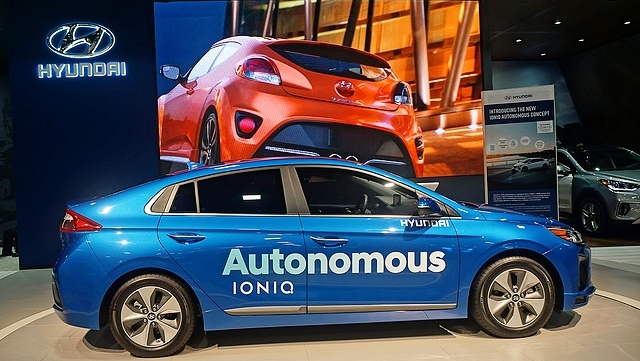A developing threat to autonomous vehicles has demanded more attention from engineers recently. Graffiti and stickers partially covering traffic signs, or re-imaging signs in some cases, is being seen to confuse autonomous vehicles and causing them to read the signs wrong. According to DailyMail, a study conducted by the University of Washington concluded that slight variations to signs, or signs that have been manipulated, can cause artificial intelligence (AI) systems (the technology that drives autonomous vehicles) to malfunction.
In one of the studies, the words ‘love’ and ‘hate were placed on a stop sign above and below the word ‘STOP’. After doing this, the researchers reported that the smart vehicle misread the sign as a ‘speed limit 45’ sign. The researchers tried another experiment by copying a right hand turn arrow that mimicked the real sign, but they slightly altered the color of the arrow. The color variation caused the AI system to mistake the right turn sign for a stop sign.
The experiments were intended to point out that the AI systems found in these autonomous vehicles can be easily deceived by slight alterations to traffic signs. Even signs with a minimal amount of graffiti that would otherwise be legible to humans can potentially cause a smart vehicle to ignore it or misread it. The researchers hope that by conducting this study automakers will be made aware of this issue, and they hope automakers will figure out ways to program defense mechanisms inside the AI technology to prevent such cases from occurring. The fear with this issue is that unless automakers can program AI systems to detect signs despite graffiti-ridden, hackers can potentially manipulate signs to cause automobile accidents. The researchers stated that both experiments did not include any special resources, “just need access to a color printer and a camera.” Anyone who has access to these two things can manipulate traffic signs to do harm to the general public. It is essential that automakers work toward amending these issues within artificial intelligence systems and mitigate risks facing the public.
Credit Becky Stern
DailyMail also reports that in addition to manipulated traffic signs confusing autonomous vehicles, other growing fears related to autonomous cars include hackers being able to gain access to personal information through a vehicle's AI system or steal a car through key-less entry. Martin Callanan, United Kingdom’s appointed Minister of Transport, weighed in on the issue stating, “we need to make sure that the designs of the vehicles in the first place are completely cyber secure so that people can't break into them, they can't steal them and more importantly they can't hack them to potentially cause accidents.”
Autonomous technology is groundbreaking innovation that will have a very positive impact on the way individuals transport, yet there is still progress to be made. This study conducted by the University of Washington is very important and identifies a tremendous problem facing self navigating technology. The value of this study is that it brings this issue to light during what still is the early stages of autonomous vehicle development. Automakers must be aware of this issue, as well as other potential dangers facing AI systems, so they may develop programs and defense mechanisms for the safety of citizens and the general public.
Issues facing autonomous technology are becoming more prevalent as the future of self-driving vehicles approaches. Yet, until the majority of society does shift toward autonomous vehicle transportation, the most important risk facing drivers is human error and the threat of a car accident. Have you been involved in an automobile accident? Call The Michigan Law Firm, PLLC at 844.4MI.FIRM. for a free consultation.








